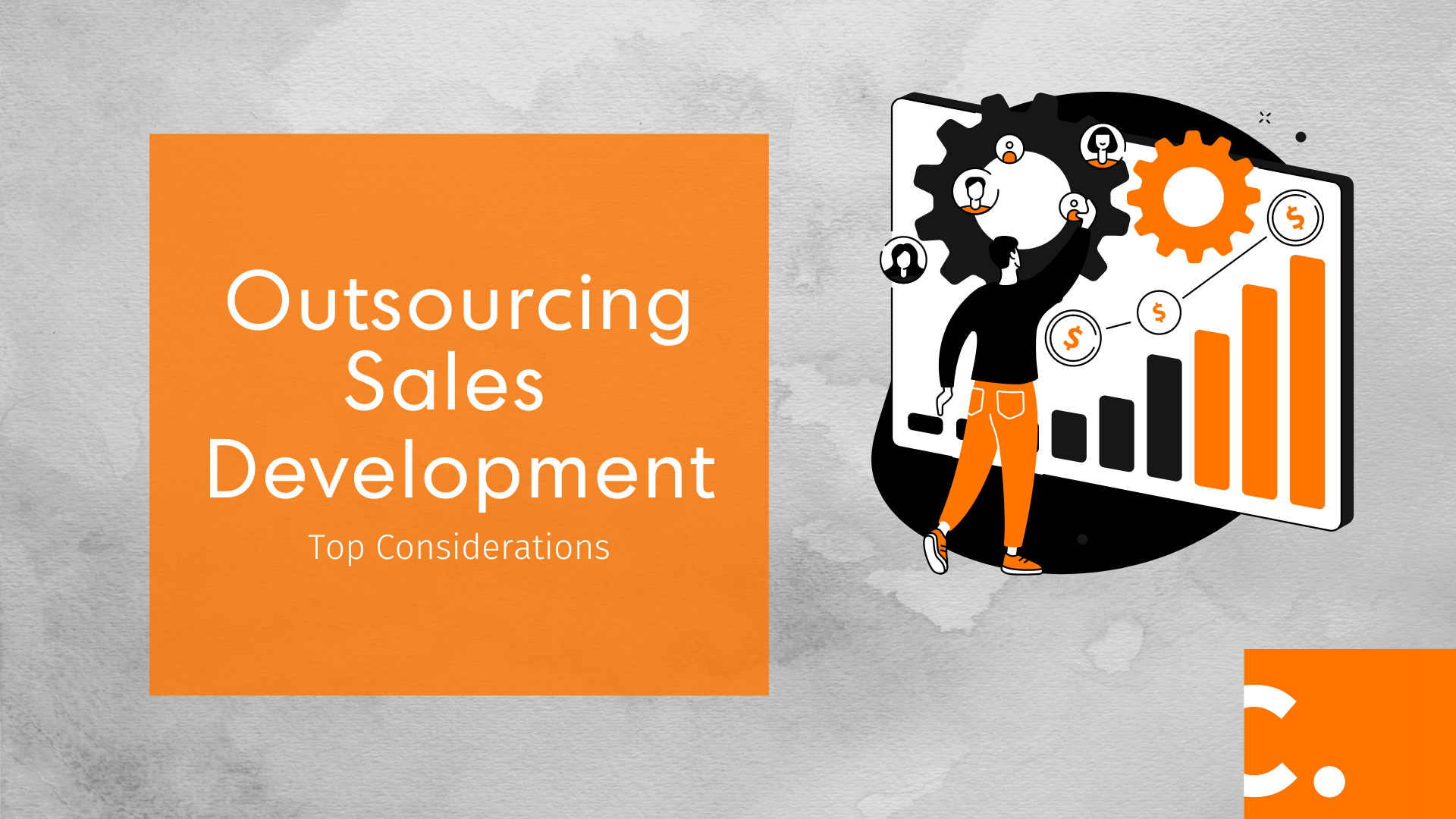
Business strategies were forced to change at the drop of a hat as the entire world dealt with COVID-19. Operations had to be transformed over night to accommodate new work environments in order for businesses to remain open. Considering most industries are starting to bounce back, it’s imperative that leaders find a way to do more with less budget. This creates an opportunity for companies to completely reevaluate and re-imagine the way they attract and communicate with new customers. If you want to take advantage of the opportunity that comes with a rebounding economy while building a sales and marketing strategy that produces a reliable revenue stream, consider working a partner that has a proven track record of success in material handling sales development, digital marketing, and CRM services. Outsourced B2B lead generation is a solution that can help you achieve sales targets faster with the proper expertise of an existing team.
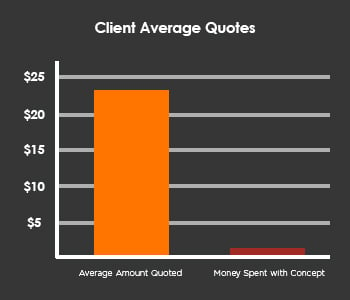
|
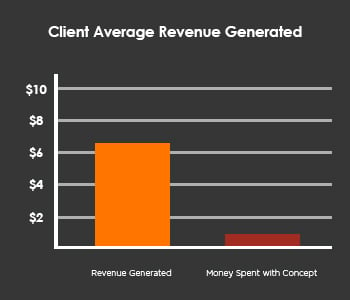
|
|
Concept clients within the material handling industry see an average of 23.5X in quoted business as a result of leads generated from our partnership. |
Concept clients within the material handling industry see a 650% revenue return in closed business from their |
According to TOPO’s 2019 Sales Development Benchmark Report – “SDRs are the most important channel for successful account-based programs. Account-based marketing is the most significant strategy for go-to-market teams today, and SDRs are the cornerstone of that strategy. Of account-based marketers, 88% cite outbound SDRs as an important channel in their marketing strategy. Because of this success, 41% of organizations have built a dedicated account based SDR team.”
With sales development being such an important piece of the puzzle, it’s more important than ever that companies get the most out of this area of their business. With that in mind, it poses the question…
“Is Sales Development something tackled in-house or is it better executed by an outsourced partner?”
This blog will walk through some of the top considerations to explore when evaluating outsourcing sales development or taking it internal.
DO WE NEED SALES DEVELOPMENT?
This is really the first consideration to come to terms with when evaluating. Sales development isn’t a new lead source, it’s not a campaign, it’s not a “shot in the arm”, it’s a company philosophy and long-term decision. If you’re entering the exploration of sales development with short-term intentions, you’re going to be in for a disappointment. So, to better determine whether Sales Development is right for your organization, you first need to make sure you understand…
What Is Sales Development?
Sales development is a phone-based team that identifies, connects with, and qualifies leads. Sales development can work inbound leads and be the front lines when it comes to prospecting and cold calling. When a lead is qualified, they then pass the qualified lead to a salesperson who takes over for the rest of the sales process.
Where Does Sales Development Fit?
Sales development is designed to bridge the gap the often exists between marketing and sales. An effective sales development team can help further qualify leads from marketing to sales, eliminating the typical push-back from salespeople that leads are qualified and ensuring that leads from Marketing are getting followed up on quickly, effectively, and consistently. Sales development doesn’t just do work for sales, but also do some of the heavy lifting and data gathering to allow for marketing to be more effective, targeted, and relevant.
WHAT IS THE OBJECTIVE OF OUR SALES DEVELOPMENT EFFORTS?
If you’ve come to the realization that sales development is right for your organization, sitting down and outlining what the true objectives are of the group is essential. Several questions to begin defining this include:
- What Is the Sales Development Team’s Objective?
- Qualifying Inbound Leads
- Sourcing NEW Qualified Leads
- Targeting & Penetrating Key Accounts
- How Will Sales Development be Measured?
At Concept, as an outsourced sales development agency since 2002, hearing how our clients will measure/quantify the effectiveness of their sales development efforts is always fascinating. Typically, the conversation starts with “I need sales development to give my sales team everything they need to close a deal.” Often this is measured in the following ways:
- Number of Profiled & Qualified Accounts Identified
- “It’s sales development’s job to let the sales team know who to talk to (decision maker) and what’s going on inside of the account, they can take it from there.”
- “It’s not sales development’s job to sell, it’s to just let sales know who we should be in front of.”
- Number of Sales-Qualified Leads Generated?
- “It’s sales development’s job to get the Sales Team qualified appointments with decision makers inside of qualified accounts, they’ll take it from there.”
- “Sales development’s job isn’t to sell, it’s to just get the Sales team in the door.”
- Total Pipeline Sourced (Quoted Deals)?
- “We’ll judge sales development on how much sales quotes from the leads sourced.”
- “It’s sales development’s job to put dales in front of people with qualified needs, who are ready to purchase, it’s sales job to close.”
- Closed Business Sourced by SDRs?
- “We’ll judge sales development on how much business we close from the leads sourced.”
- “It’s sales development’s job to put sales in front of people with qualified needs, who are ready to purchase, and result in closed business.”
From our experience, regardless of what the initial objective is, it eventually almost always gets measured by closed business sourced by SDRs. Knowing this, it’s important to be able to track each step of the way to be able to improve on each area accordingly. At Concept, we’ve developed the “Momentum Assessment” to help us track each step and make necessary adjustments accordingly:
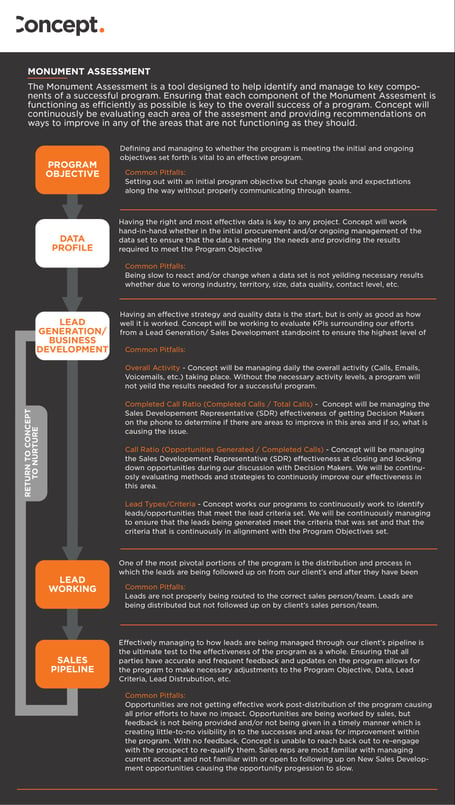
WHAT IS INVOLVED IN BUILDING A SALES DEVELOPMENT TEAM?
Building a sales development team is more than just putting someone on the phone and expecting them to generate qualified leads. Doing this effectively requires putting attention, time, and investment in to some key areas:
- Management – The first step to a successful Sales Development team is getting the right manager in place. With the landscape of Sales Development continuously changing, getting a leader who understands the various levers, knobs, and dials that they can tweak and adjust to improve Sales Development results is key. This person needs to be able to work cross-functionally with both Marketing and Sales departments to continue to improve the qualification, information gathering, and hand-off between both departments throughout the funnel.
- Determining Size of SDR Team – When evaluating the desired size of team, there are a few ways to evaluate:
- SDR To Sales/Account Rep Ratio
- Size of Territory (Number of Accounts)
- Number of Inbound Leads
- Hiring & Training – One of the most important components to building an effective sales development team is having a strong process and focus around hiring, training, and ongoing development. According to The Bridge Group the average SDR tenure is around 1.5 years. With the average ramp time (from hire to full productivity) at 3.2 months. That means on average you have 15 months of an SDR producing at capacity. The SDR role has a way of “expediting the inevitable”. For those SDRs that are successful, around that 1.5 year mark, they are often looking to move in to the next role. For those that haven’t been successful for the first 1.5 years, many will determine that a sales development position isn’t a fit for them. With these numbers in mind, depending on the size of the team your organization needs, this part of the process continues to grow.
- Technology – Having the right tech stack for your sales development team is essential. According to TOPO, “The median annual technology spend per SDR reported by sales development leaders was $7,500. This spend was the same for small and large teams. These results are on the low end of TOPO’s recommended range of $7,000-$9,000 per SDR per year.”
Navigating through all of the options is becoming increasingly difficult with all of the options available and growing daily.
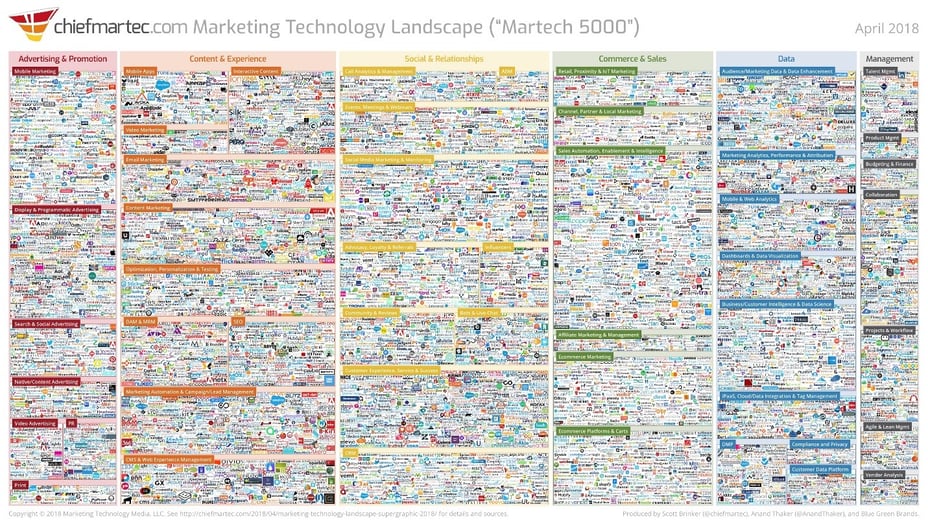
Several key pieces of technology that will be essential for your sales development team include:
- CRM – This should be the “system of truth” for all departments (Marketing, Sales Development, and Sales) to be working from. CRM will be the platform that ties all departments, results, and data together.
- Sales Intelligence Data – Whether your Sales Development team is responsible for inbound lead qualification or outbound Sales Development, equipping them with the tools they need to do necessary research, data gathering, and contact identification, is essential.
- Sales Engagement Software – In many young or new Sales Development programs, investment in Sales Engagement tools often get overlooked. These tools come in a variety of formats including whether in isolation or combined:
- Dialing Technology
- Sequences/Cadences
With all of the options out there, there are a few key areas to keep in mind when evaluating:
- Productivity Improvement – Many of these tools can 2X+ a SDRs productivity. It’s crucial to make sure you’re maximizing all tools available to avoid the need to add unnecessary headcount to the team when technology can accomplish. In addition to increasing productivity, it can standardize process, minimize the need for excess hiring and training, and maximize ROI.
- Customer Experience Improvement – While productivity is important, it’s vital to remember that in today’s competitive landscape, not to confuse activity levels with productivity or results. Having an effective tech stack should also improve the overall experience of the customers/prospects the team is going after not just the number of touches to them. Whether that be a result of being able to recall and recite on past dialogue with the prospect, provide personalization to outreach strategy at scale, or to ensure that as prospects move from marketing to sales development to sales that each team member is on the same page of what has transpired with the prospect to that point to maintain a seamless hand-off and consistent customer experience.
- Avoid Technology Overlap – With all the technology available for sales development, it’s easy to get caught up in all the benefits from each available to your team. At Concept, we often see companies with very robust tech stacks for their SDR teams, but in many cases, there is a large amount of overlap in what these tools can provide. It’s important to continuously take inventory of your tech stack and ensure that you’re properly balancing out features and benefits with cost and minimization of tech.
WHAT IS TYPICAL ACTIVITY & METRICS FOR A SALES DEVELOPMENT REP?
Sales development is a unique blend of math, art, and Science. When evaluating the effectiveness of your team and efforts, there are many metrics that are often considered. For the sake of simplicity, metrics can be evaluated in two categories:
- Activity (Inputs)
In its simplest form, sales development activities are measured in the following way:
Attempts (Phone, Email, Social, etc.) –> Connections –> Conversations –> Qualified Leads
However, each step of this process is often broken down even further to determine effectiveness of each step. In many cases, the following metrics are often explored:
-
- Call Effectiveness
- Attempt to Conversation Ratio – How many calls does it take to reach a decision maker?
- Voicemail Response Ratio – How many voicemails does it take to get a response?
- Conversation to Lead Ratio – How many conversations does it take to generate a qualified lead?
- Email Effectiveness
- Open Rates
- Response Rates
- Source Effectiveness
- What Lead Source is Best?
- Conversion Ratio by Source
- Call Effectiveness
These metrics vary for each company based on a variety of reasons. One of the biggest variables is whether these leads are coming inbound vs. outbound. TOPO did a benchmark report for Sales Development in 2019, outlining some of the key sales development activity averages.
|
Category |
Metric |
Inbound |
Outbound |
|
Touches |
Total Touches |
16.7 |
21.3 |
|
# of Dials |
5.2 |
7.5 |
|
|
# of Emails |
5.6 |
6.9 |
|
|
Pursuit Duration |
19 days |
24 days |
|
|
Targets |
Lead Response Time |
Less than 1 hour |
N/A |
|
# of Contacts Engaged per Account |
1 |
5 to 9 |
|
|
Activities |
Daily Activities |
100 per day |
75 per day |
|
# Dials |
44 per day |
35 per day |
|
|
# Emails |
56 per day |
40 per day |
|
|
# of Conversations |
8-10 per day |
3-4 per day |
|
|
Conversation Rate |
1 out of 15 (6.6%) |
1 out of 25 (4%) |
- Results (Outputs)
While activity and input metrics are important to measure, you have to also marry them with results metrics to get the entire picture. For example, if you have a really good lead source or really good SDR, that converts to a lot of qualified leads, but none of them result in quotes/deals, you need to evaluate this. Several key results metrics include:- Total Leads Generated
- Leads Generated Vs. Accepted Ratio
- % of Leads Resulting in Quoted Business
- Total Pipeline (Quoted Deals) Sourced/Qualified by Sales Development
- Total Won Business Sourced/Qualified by Sales Development
TO BRING IN-HOUSE OR OUTSOURCE SALES DEVELOPMENT?
Having now gone through some of the key components of sales development, determining whether to bring it in-house or outsource is now the question and in many cases the solution varies based on company.
While there often many considerations, typically the evaluation can be summarized by two trains of thought:
- Benefits of Keeping In-House – Building and developing a sales development process to be used for the long-term benefits of hiring, training, grooming and retaining of quality candidates for future roles within the organization, such as Sales/Accounts or Marketing.
- Benefits of Outsourcing – Expertise, speed, and costs. Most companies specialize in what they do and are not specialized in Sales Development. They aren’t interested in adding another division, group, etc. to their organization, or even have the motivation or interest to tackle it. Instead, they are interested in getting qualified leads/appointments as soon as possible with the least amount of cost.
- Expertise – Similarly to how organizations specialize in what they do, outsourced sales development agencies specialize in generating qualified leads for their clients. Because of this, organizations who outsource get to benefit from best practices, lessons learned, and in many cases specific industry experience. The benefit of this is that in many cases a good sales development partner will bring future problems to your attention before even you notice them to be an issue. Whether that be proposed adjustments to messaging, approach, market segment or process improvements and recommendations on how to more effective when streamlining their sales process. Another perk to working with an outsourced partner is that they are most likely working with many different companies and have access to new ideas, trends, and considerations most likely more so than an internal team would.
- Speed - Most companies looking for sales development support aren’t interested in leads they’re interested in increasing their revenue from new customers. However, they understand to do so, they need more leads and “at-bats” to do so, which is where the evaluation of sales development came from. Something that often gets overlooked when considering the importance of speed is a true recognition of how long it may take to see results. While everyone is entering into it with high expectations that in ideal world SDR gets on the phone, calls prospect, they say they have a need, the hand it over to the Sales Rep and they close it instantly. While possible, the likelihood of that happening is often slim. Instead a realistic expectation would be to evaluate things like:
- How long will it take me to get someone on the phone with the necessary tools, strategy, messaging, etc.?
- Assuming an average of 15+ touches to have a conversation, how long will it take to have a conversation with a decision maker?
- How many conversations do I need to have to get a qualified lead?
- Once I get a lead, what is my sales process and how long does it typically take to quote?
- What percentage of my qualified leads am I anticipating quoting?
- Once I quote, how long does it typically take to close?
- What percentage of qualified leads am I anticipating closing?
After the math of all of that is calculated, what is a realistic timeframe to begin seeing an ROI from a newly incorporated sales development program?
- Costs – Whether an organization decides to take in-house or outsource, developing a successful Sales Development program is a significant investment. What many organizations fail to consider is that cost for Sales Development is relative to results. Regardless of whether it’s comparing in-house vs. outsourcing or comparing one Sales Development agency to the next. “Saving Money” on Sales Development is only important if the models can produce the same and desired level of results.
- Comparing Sales Development Agency Costs – Many agencies have varying models on how they generate results or leads. Some agencies are more heavily email-based, other agencies more phone based. Depending on the strategy and medium they’re using, this can often impact the costs of a program. It’s important to understand each agencies strategy and how they’re planning on tackling this when evaluating costs. While agencies who are more heavily email-based can be lesser in costs, it’s important to consider your target audience, are they more receptive to email or phone?
- Comparing In-House Vs. Outsourcing Costs - If you bring in-house, you have to consider the costs of things such as; Salaries, Technology (Software Licenses & Hardware), Supplies, Office Space (If Applicable), Recruiting, Hiring, Training & On-boarding, Turnover, etc. Outsourcing bundles all of those costs often in to a single vendor line item invoiced monthly.
HOW DO I DECIDE?
Whether you decide to bring in-house or work with an outsourced partner, at the end of the day, making the decision should ultimately be based on what model do I think will yield the best results for my company both in the immediacy, and in the long-run.
The sales development landscape is ever-changing. Making sure that you’re comfortable that your decision is elastic enough to account for and grow with the ever-changing market is key to long-term sales development success. At Concept, we partner with our clients through design, implementation, and execution of their B2B sales development and marketing strategies.
Concept is a full-service sales development agency who partners with clients to help them reach their sales goals. Our sales development, digital marketing, and CRM divisions become an extension of your team specializing in the front-end sales pipeline to help you bring in sales-qualified leads. If you’re going through this evaluation and are interested in discussing further, contact our team today.
Partner With Concept
Share your details and our team will reach out to discuss collaboration opportunities

